 Police confront demonstrators as Black Lives Matter supporters protest in Portland, Oregon on July 4, 2020. | John Rudoff/Anadolu Agency via Getty Images
Police confront demonstrators as Black Lives Matter supporters protest in Portland, Oregon on July 4, 2020. | John Rudoff/Anadolu Agency via Getty Images
“At this point, we’re already in a constitutional crisis,” an Oregon attorney told Vox.
Oregon’s governor doesn’t want them. Oregon’s senators don’t want them. Portland’s mayor and city commissioners don’t want them. And Portland’s residents don’t want them.
And yet, at the urging of President Donald Trump, federal officers are roaming the streets of Oregon’s biggest city in unmarked vehicles, detaining protesters without identifying themselves.
Multiple reports and videos clearly show heavily armed federal law enforcement officers dressed in camouflage stepping out of unmarked civilian vans and forcibly detaining anti-racism and anti-police brutality demonstrators on the streets of Portland, often far away from any federal property (where federal officials have jurisdiction). In many instances, those taken into custody hadn’t clearly violated any laws.
After several days of fear and confusion as reports of these mysterious activities piled up, the Trump administration acknowledged that the Department of Homeland Security had officers from Border Patrol and other agencies use unmarked vehicles in Portland last week to protect federal property, namely a federal courthouse in the heart of the city, which has been tagged by graffiti and had a small fire and broken windows.
Trump administration officials, especially acting Department of Homeland Security Secretary Chad Wolf, have defended the aggressive tactics. They’ve portrayed the largely peaceful George Floyd-inspired protests in the city, which have lasted over 50 days and at times led to some property destruction and minor attacks on authorities, as a “violent mob” of “lawless anarchists.”
This is happening on the streets of our hometown of Portland, OR.
— Eleven Films (@Eleven_Films) July 17, 2020
We will continue to resist. They are fucking with the wrong city #TheResistance
pic.twitter.com/byOUkcp5iZ
“The city of Portland has been under siege ... by a violent mob while local political leaders refuse to restore order to protect their city,” he said in a lengthy July 16 statement. “Each night, lawless anarchists destroy and desecrate property, including the federal courthouse, and attack the brave law enforcement officers protecting it.”
“DHS will not abdicate its solemn duty to protect federal facilities and those within them,” he added.
But critics say the heavy-handed approach is an overreaction to mostly peaceful protests and detrimental to the rule of law. “This is the stuff of fascist regimes, not American democracy,” Sen. Ron Wyden (D-OR) told me. “It’s important that we don’t have secret police in America,” Sen. Jeff Merkley (D-OR) also said in an interview.
Two direct consequences have come out of the national controversy.
First, activists and the lawyers who represent them say the once-dwindling crowds are growing again in response to the federal government’s actions. “More and more protesters are coming out each night,” said Ashlee Albies, a local attorney who represents Don’t Shoot Portland, a civil rights organization. “There are more protesters now than there are feds.”
A mounting standoff, some worry, could potentially lead to even more tensions and violence. In just the past day, demonstrators burned the Portland police union’s building and federal officers fired tear gas at mothers peacefully protesting.
Second, a legal battle is now underway, pitting Portland’s citizens against a federal government with broad statutory authorities. Few, though, believe the courts will compel the Trump administration to stand down. At most, it might lead federal law enforcement to act more cautiously, but they’ll still operate in areas where locals don’t want them to.
Which means the events in Portland are likely to persist for quite some time, testing the limits of federal authority in American cities and the resolve of those who live in them. “At this point, we’re already in a constitutional crisis,” said Juan Chávez, a lawyer and director of the civil rights project at the Oregon Justice Resource Center.
Activists say Portland police were abusing their power before federal officials arrived
Two months ago, the death of George Floyd, an unarmed Black man killed by police officers in Minneapolis, sparked nationwide protests calling for racial equality and expansive police reform. As in other American cities, thousands took to the streets of Portland and vowed to keep the pressure on local and federal leaders. But the situation in Portland quickly turned ugly.
From the start, Portland’s police force used tear gas to maintain order. Such measures led a US district judge on June 9 to ban the use of tear gas except in instances “in which the lives or safety of the public or the police are at risk.” That order would be expanded two weeks later to include rubber bullets and other nonlethal munitions.
In the midst of the legal battle, Portland’s police force claimed order was unraveling as statues of Confederate generals and former Presidents George Washington and Thomas Jefferson were defaced or torn down.
State lawmakers passed a law saying local police could only use tear gas on protesters if police declared that a “riot” was underway that could severely impact the safety of officers and property. That provided law enforcement quite a loophole to continue using tear gas, local activists told me — one that police have exploited since.
Disperse from the area. CS gas is being used.
— Portland Police (@PortlandPolice) July 1, 2020
That not only angered protesters but also impacted uninvolved citizens. In some cases, the tear gas would waft into residential areas, affecting drivers, homeowners, gas station attendants, and public transportation riders far away from the standoff.
But in some ways that wasn’t so surprising, locals said: Portland’s police had long been known to use aggressive tactics, as evidenced by a recent incident in which officers swarmed a protester on his bicycle to arrest him.
WATCH - Portland Police officers knock a protester off of his bicycle and arrest him outside of Lownsdale Square Park near the Federal Courthouse downtown #LiveOnK2 pic.twitter.com/tow0GzeyzW
— Dan McCarthy (@DanMcKATU) July 16, 2020
Portland’s police department continued to defend its actions, though, claiming such measures were necessary to tamp down unruly or unlawful protests.
Tear gas “is uncomfortable, but effective at dispersing crowds,” Portland Police Chief Chuck Lovell said in a July 1 video posted to Twitter. “We would rather not use it. We would rather have those in the area follow the law and not engage in dangerous behavior.”
Deploying tear gas and other crowd-control methods didn’t compel all protesters to stop demonstrating, but they did lead to a reduction in numbers, activists said. Still, any amount of protesters tussling with law enforcement was apparently too much for President Donald Trump, so he got involved.
The feds come to Portland
On June 26, Trump signed an executive order to send federal officers to cities around the country to protect statues, monuments, and federal property. Five days later, Wolf, the acting Department of Homeland Security secretary, formed the Protecting American Communities Task Force to coordinate the response nationwide.
“DHS is answering the President’s call to use our law enforcement personnel across the country to protect our historic landmarks,” Wolf said in a July 1 statement. “We won’t stand idly by while violent anarchists and rioters seek not only to vandalize and destroy the symbols of our nation, but to disrupt law and order and sow chaos in our communities.”
According to DHS, the new task force would “conduct ongoing assessments of potential civil unrest or destruction and allocate resources to protect people and property,” which might “involve potential surge activity to ensure the continuing protection of critical locations.”
The task force was put together in haste. The units DHS would send didn’t have the proper training to deal with mass demonstrations, per a Homeland Security memo prepared for Wolf and reported by the New York Times on Saturday. And yet, groups like “BORTAC” — a Border Patrol unit that mainly investigates drug dealers and acts like a SWAT team — deployed to Portland in early July.
They and other federal law enforcement officers assembled at the Mark O. Hatfield Federal Courthouse, drawing the attention of protesters and prompting a crowd to form outside the building. But on July 1 — the day the task force was formally announced — the federal officers really made their presence known. They came out of the boarded-up building and fired pepper balls at the demonstrators before retreating back inside.
That was the first clue activists got that the feds would be more involved than initially expected. Washington said federal officials would be in Portland mainly to protect federal property and investigate federal crimes, said Chávez, the civil rights attorney, but “we knew then and there that that wasn’t all they were doing.”
Portland Mayor Ted Wheeler was nervous about what he’d seen and called for an end to violent protests and a review of police tactics on July 3. “I am calling for a full and thorough review of all use of force tactics and meaningful public transparency,” he said.
But the federal government’s involvement only escalated from there.
On July 12, 26-year-old protester Donavan LaBella was shot in the head by federal officials with a “less lethal” munition while he held a boombox in front of federal officers. His mother said LaBella sustained facial and skull fractures requiring reconstructive surgery. That episode sparked a major outcry from the city and state’s most prominent politicians.
View this post on InstagramBlood on the floor too. This incident happened around 9:48pm on July 11th, 2020.
A post shared by Tomas | Videographer. Editor. (@tomasmorales_iv) on
“The events of last night at the federal courthouse were the tragic and avoidable result of President Donald Trump, for weeks, continuing to push for force and violence in response to protests,” Oregon Gov. Kate Brown said in a statement at the time. “President Trump deploying armed federal officers to Portland only serves to escalate tensions and, as we saw yesterday, will inevitably lead to unnecessary violence and confrontation.”
And in the last week or so, it appears federal officers have taken their mandate a step further by riding around Portland in unmarked vehicles and detaining suspects in ways critics say amounts to kidnapping.
What is this? They are kidnapping people. pic.twitter.com/M0AnuZ1GSi
— Cozca (@KohzKah) July 15, 2020
Perhaps the best-known case is that of Mark Pettibone. He and his friend were returning home from a protest at the courthouse in the early hours of July 15. The protest had been mostly peaceful, and law enforcement agencies hadn’t used tear gas against demonstrators that day.
But around 2 am, unidentified people in camouflage stepped out of a van and threw Pettibone into the back of it against his will. Pettibone, who claims he did nothing suspicious or illegal, told Oregon Public Broadcasting (OPB) on July 16 that “I had my beanie pulled over my face so I couldn’t see and they held my hands over my head.”
After driving around downtown for a while, the armed men took him inside a building, which Pettibone would only later learn was the federal courthouse. “It was basically a process of facing many walls and corners as they patted me down and took my picture and rummaged through my belongings,” he told OPB.
Pettibone was placed in a cell before two officers came to read him his Miranda rights, though he says they didn’t say why he was under arrest. Pettibone didn’t waive those rights and instead demanded to speak to a lawyer. Roughly 90 minutes later, the officials let him go without recording his arrest or charging him with any crime.
In a subsequent interview with the Washington Post, Pettibone said he still doesn’t know exactly who arrested him or why.
Federal agents deny having detained Pettibone and haven’t answered reporters’ questions about that and other similar incidents. But Pettibone’s account, reflected in other people’s testimonials and videos, seems to show that this is a new — and highly irregular, if not illegal — practice by federal authorities. Even if the agents have a small patch on their arm that says the name of their agency, the fact that you can’t tell who they are, they won’t say who they are, and they ride in unidentified vehicles while wearing camouflage (not their usual uniforms) makes them unmarked.
“Detaining human beings is generally not a lawful tactic just to talk to people,” said Joshua Geltzer, the executive director for the Institute for Constitutional Advocacy and Protection at Georgetown University.
The situation has become so fraught that even Portland’s police department has distanced itself from the federal actions. “At times, federal officers may take action in proximity to Portland officers ... We may take action near them,” Lovell, the police chief, said last week. “The federal officers have their objectives and the Portland Police Bureau has our objectives. We don’t direct federal officers’ actions, and they do not direct ours.”
Such a statement was likely offered ahead of what Lovell surely suspected was an imminent legal fight — one that has just arrived.
“If this can happen here in Portland, it can happen anywhere”
If you ask federal officials about their conduct in Portland — namely operating in secret to detain suspected offenders of federal law — they say they’re just maintaining law and order while following the president’s directives.
“While the US Customs and Border Protection respects every American’s right to protest peacefully, violence and civil unrest will not be tolerated,” a spokesperson for the agency told me, echoing Wolf’s assertions that “violent anarchists have organized events in Portland over the last several weeks with willful intent to damage and destroy federal property, as well as injure federal officers and agents.”
The spokesperson stressed two other points. First, the spokesperson said that CBP agents do identify themselves — including wearing insignia of their department (as in the tweet below) — but don’t display their names “due to recent doxxing incidents against law enforcement personnel who serve and protect our country.”
.@CBP will continue to arrest the violent criminals that are destroying federal property & injuring our agents/officers in Portland. CBP will restore and maintain law & order. pic.twitter.com/fYgzpTwPWh
— CBP Mark Morgan (@CBPMarkMorgan) July 17, 2020
Second, the spokesperson said CBP supports the Federal Protective Service, a DHS agency charged with safeguarding federal property in Portland and elsewhere.
The spokesperson cited 40 USC 1315, which gives the DHS secretary the authority to have federal agents under his command bolster the FPS’s efforts. Others called into that support mission include the Transportation Security Administration, the Coast Guard, and Immigration and Customs Enforcement.
Members of those forces are allowed to arrest those suspected of crimes, carry weapons, and even investigate potential offenses on or off federal property, experts say (though how far off that property is permissible and what reasonable suspicion authorities must initially prove is up for debate).
There are many possible violations to look into as protesters have graffitied and launched fireworks at federal buildings and property, as well as thrown objects like rocks and bottles at US government agents.
Even so, Georgetown’s Geltzer says the level of force must match the suspected offense — and that shooting protesters in the face with projectiles or detaining them in shadowy ways doesn’t do that. “No one excuses bad behavior, but it doesn’t change what an appropriate response looks like,” he told me. Law enforcement can of course speak with suspects if they assent, Geltzer continued, but “what’s not okay is going to the point of forcible arrest — against someone’s will — without probable cause.”
One would think federal authorities would act more cautiously because the city and state didn’t invite them in to help, experts said.
So far, federal authorities have yet to show real evidence to back up claims of probable cause, save for a litany of alleged violations by Wolf in his July 16 statement. Below is a screenshot of a few sections from that list.
/cdn.vox-cdn.com/uploads/chorus_asset/file/20100243/Screen_Shot_2020_07_20_at_3.53.56_PM.png) Department of Homeland Security
Department of Homeland Security
That lack of clarity is partly why Oregon Attorney General Ellen Rosenblum last Friday filed a lawsuit against the Department of Homeland Security and other agencies involved in the federal response in Portland. Per her office’s press release last week, the motion, if granted, “would immediately stop federal authorities from unlawfully detaining Oregonians,” thereby protecting their First, Fourth, and Fifth Amendment rights (among others).
“Every American should be repulsed when they see this happening,” Rosenblum said in a statement at the time. “If this can happen here in Portland, it can happen anywhere.” She clearly has the support of Oregon’s US politicians, with Wyden, Merkley, and two representatives on the same day calling for a probe into federal law enforcement.
“This abuse of power demands an investigation, and those federal agents involved should find their federal employment terminated,” Wyden told me.
Beyond the legal matters, though, there’s also a question of whether the federal officers’ tactics are even effective at calming down the protests — or whether, as most experts I spoke to said, they’re inflaming the situation further.
First, there’s the basic issue of federal officials not wearing specific identifying uniforms or insignia or otherwise clearly identifying themselves to those they’re detaining.
Mike German, a former FBI agent now with the Brennan Center for Justice, told me the practice of officers identifying themselves before detaining suspects is equally important for officers’ safety as for citizens’. The person under suspicion may not believe federal officers are who they really are, instead believing they are members of militias or even just random vigilantes. Portland, after all, has become an epicenter in the US for far-right violence, replete with ordinary citizens dressing like soldiers to make a political point and scare their enemies.
Such confusion makes policing in this way harder. “How are [suspects] supposed to know that it’s a federal official arresting them?” German asked. “Without proper insignia, the interest in resisting is much greater,” potentially escalating to violence. It’s also possible, but less likely, that federal officials will mistake each other for protesters or militia groups in similar uniforms. “We don’t want to be pitting law enforcement against one another in the streets of an American city,” German noted.
Then there’s the broader issue of using harsh tactics to attempt to quell demonstrations.
Edward Maguire, an expert on protest policing at Arizona State University who co-authored a well-regarded (free) book on the subject, said the federal government’s strategy to use overwhelming force will surely backfire.
Simply put, his research from observing the policing of protests around the world shows authorities who use over-the-top tactics spark a massive backlash. The “moderates” in the crowd — that is, those protesting peacefully and who don’t break the law — start to embrace a more radical stance toward law enforcement aiming to control the protest. Instead of calming everything down, then, authorities end up with “a lot of people who are really pissed off,” Maguire said.
The Trump administration is committing this cardinal sin of protest policing in Portland. “The response that we’re seeing from the federal agents is unskilled, lacks any coherent underlying strategy, and seems almost perfectly designed to escalate tensions rather than reduce them,” Maguire told me. “It’s almost cartoonish it’s so ridiculous.”
The implications are chilling. On one hand, you have a federal government determined to quash protests with ever-increasing force. On the other hand, you have demonstrations that at one point were winding down but are now ramping up again in direct response to the heavy-handedness.
And so far the escalating standoff shows no signs of dissipating.
No one is backing down
Talk to Portland’s protesters and their lawyers, and it’s clear they expect to stay the course despite federal pressure.
“We’ve been shot at, gassed, and beaten over the last two months — and we still haven’t given up,” said Chávez, the Oregon Justice Resource Center attorney. “The intimidation is part of the intent,” but “the only thing that can stop this is people power.”
“People in Portland are not going to back down, so the feds should just leave,” said Albies, the attorney for civil rights activists in the city. “The more they attack protesters, the more they demonstrate that property is more important than human rights and human lives.”
But listen to the statements from those in charge of the federal response and it’s equally apparent they will continue this campaign. “We must protect Federal property, AND OUR PEOPLE,” Trump wrote in a Sunday tweet.
We are trying to help Portland, not hurt it. Their leadership has, for months, lost control of the anarchists and agitators. They are missing in action. We must protect Federal property, AND OUR PEOPLE. These were not merely protesters, these are the real deal!
— Donald J. Trump (@realDonaldTrump) July 19, 2020
Likely bolstered by the president’s vocal support, acting DHS chief Wolf — fresh off a visit with federal officers in Portland the week before — told Fox News on Monday that “I don’t need invitations by the state, state mayors, or state governors to do our job. We’re going to do that, whether they like us there or not.”
"I don't need invitations by the state, state mayors, or state governors to do our job. We're going to do that, whether they like us there or not.” — acting DHS Secretary Chad Wolf pic.twitter.com/Rr2P8q6Ut1
— Aaron Rupar (@atrupar) July 20, 2020
With no one backing down, tensions have continued to skyrocket. On Sunday night, protesters broke into the Portland Police Association’s office and lit the building on fire, according to the city’s police.
People have broken into the Portland Police Association office and lit the building on fire.
— Portland Police (@PortlandPolice) July 19, 2020
That same evening, federal officers launched tear gas at members of Mothers Against Police Brutality who had formed a human shield in front of demonstrators. They were mainly chanting, “Leave our kids alone!” per someone at the scene, who also noted that at least one of the mothers was pregnant.
The women on the right in white are a group of moms protesting against police brutality in Portland. The canister police toss is tear gas. pic.twitter.com/raEsSh41HW
— Joshua Potash (@JoshuaPotash) July 19, 2020
Despite the rising tensions, the Trump administration is apparently pleased with overall results. It appears the federal government is considering a similar response in Chicago, which would surely cause an even bigger uproar due to the size of the city and Trump’s racially charged comments about violence there. It would also crystallize that Trump and others believe such measures are the only way to handle nationwide protests, results be damned.
That’s why Albies and other activists believe a definitive stand must take place in Portland — or else risk similar scenes metastasizing around America. “Litigation is not going stop this. Political action is not going to stop this. People power is not going to stop this,” she said. “But all of that together will place maximum pressure on the police and federal government.”
Support Vox’s explanatory journalism
Every day at Vox, we aim to answer your most important questions and provide you, and our audience around the world, with information that has the power to save lives. Our mission has never been more vital than it is in this moment: to empower you through understanding. Vox’s work is reaching more people than ever, but our distinctive brand of explanatory journalism takes resources — particularly during a pandemic and an economic downturn. Your financial contribution will not constitute a donation, but it will enable our staff to continue to offer free articles, videos, and podcasts at the quality and volume that this moment requires. Please consider making a contribution to Vox today.

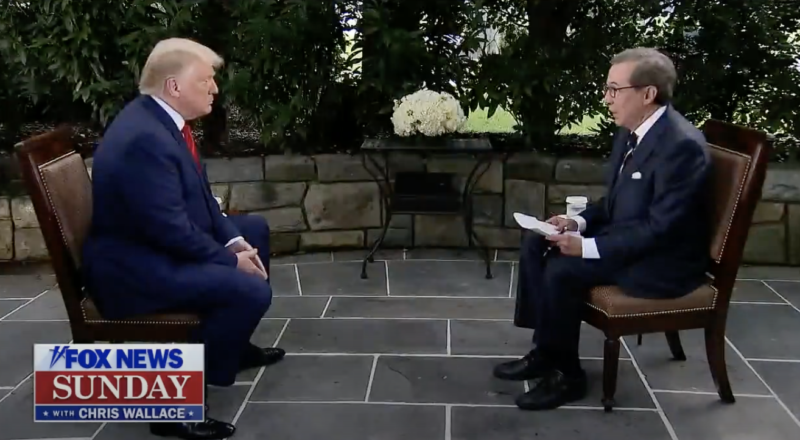
























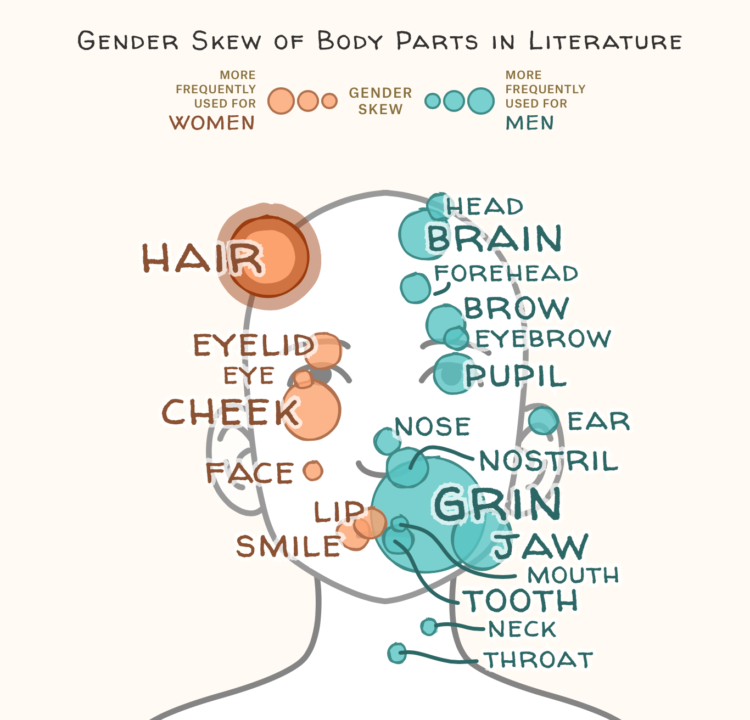
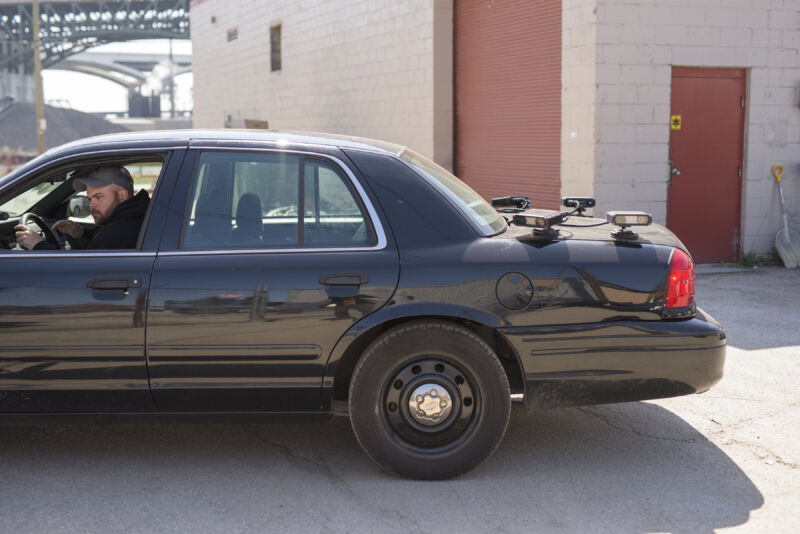
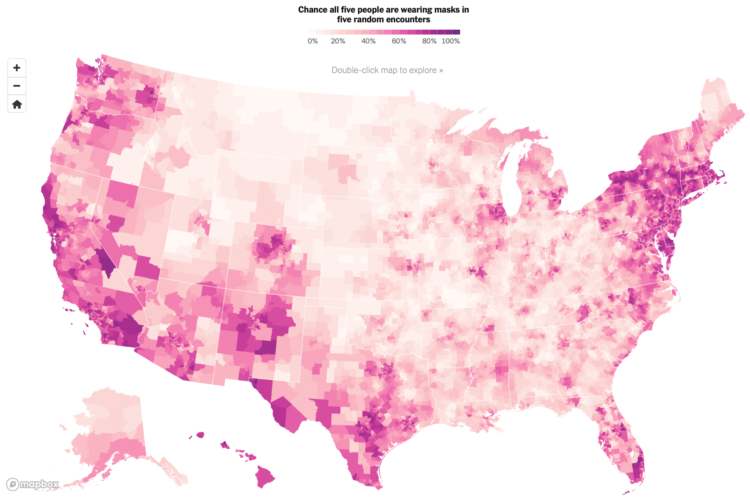
 Image copyright Getty Images
Image copyright Getty Images 
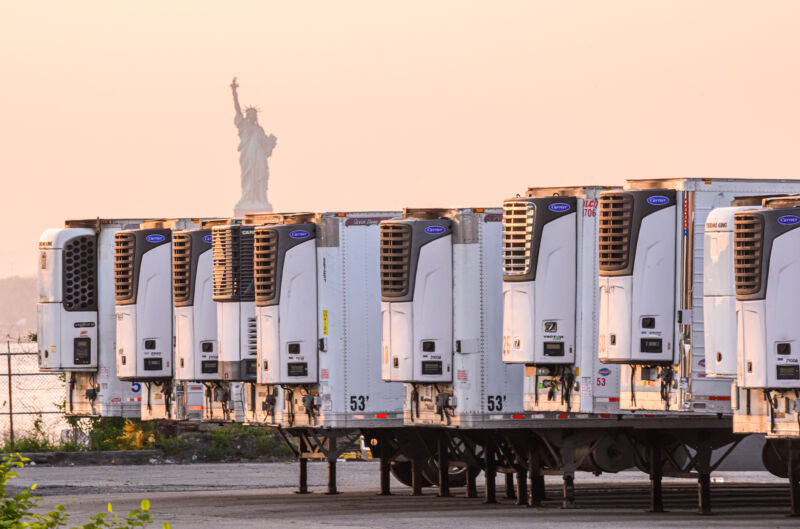

 Samantha Sulik (left), director of a day care center in Tacoma, Washington, walks a child to their parent at the end of the day. As a precaution against the spread of the coronavirus, parents are not allowed to come into the building when they pick up their children. | Ted S. Warren/AP
Samantha Sulik (left), director of a day care center in Tacoma, Washington, walks a child to their parent at the end of the day. As a precaution against the spread of the coronavirus, parents are not allowed to come into the building when they pick up their children. | Ted S. Warren/AP

